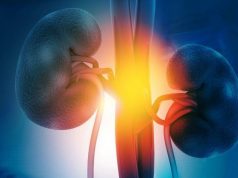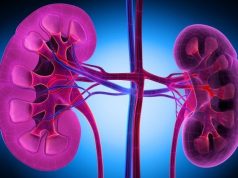Similar results seen when cohort was limited to seemingly healthy teens, those free of diabetes and hypertension at end of follow-up
By Elana Gotkine HealthDay Reporter
MONDAY, Dec. 11, 2023 (HealthDay News) — High body mass index (BMI) in late adolescence is associated with early chronic kidney disease (CKD) in young adulthood, according to a study published online Dec. 11 in JAMA Pediatrics.
Avishai M. Tsur, M.D., from the Israel Defense Forces, Medical Corps, in Ramat Gan, and colleagues examined the association between adolescent BMI and early CKD in young adulthood (younger than 45 years). The analysis included 629,168 adolescents (54.5 and 45.5 percent males and females, respectively) aged 16 to 20 years, medically evaluated for mandatory military service. Early CKD was defined as stage 1 to 2 CKD based on moderately or severely increased albuminuria, with an estimated glomerular filtration rate of â¥60 mL/min/1.73 m2.
The researchers found that during a mean follow-up of 13.4 years for males and females, 0.3 percent developed early CKD. The adjusted hazard ratios for CKD were 1.8, 4.0, 6.7, and 9.4 for adolescents with high-normal BMI, overweight, mild obesity, and severe obesity, respectively, among males. The corresponding hazard ratios among females were 1.4, 2.3, 2.7, and 4.3. When the cohort was limited to individuals who were seemingly healthy as adolescents, those surveyed up to 30 years of age, or those free of diabetes and hypertension at the end of follow-up, the results were similar.
“Given the increasing obesity rates among adolescents, our findings are a harbinger of the potentially preventable increasing burden of CKD and subsequent cardiovascular disease,” the authors write.
Abstract/Full Text (subscription or payment may be required)
Copyright © 2023 HealthDay. All rights reserved.








